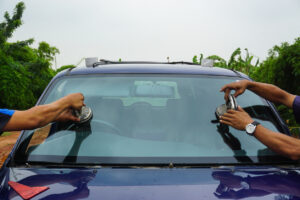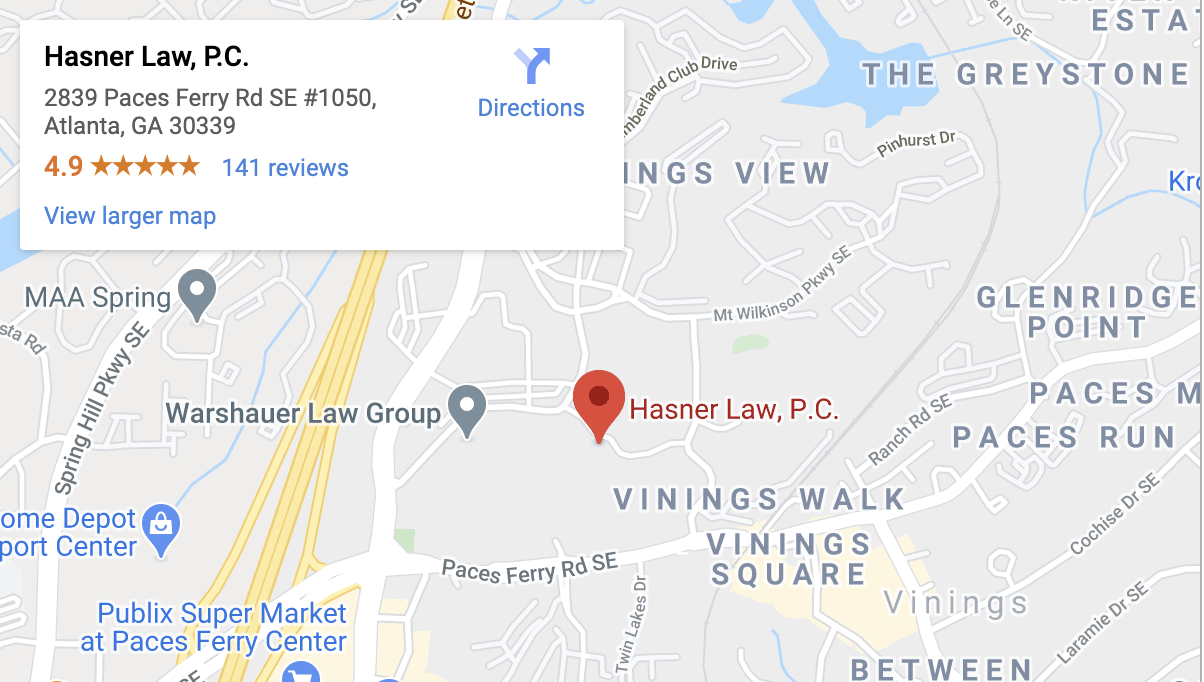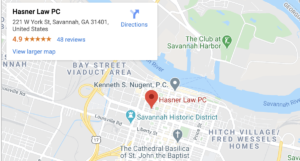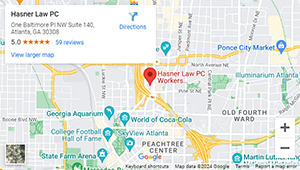Window Tint Laws in Georgia

Tinted windows can keep your car cool, prevent sun damage to your car’s interior surfaces, and even prevent sunburn. They accomplish these tasks by reducing the ultraviolet, visible, and infrared light that passes through the glass.
But window tint can also pose safety concerns. Your eyes need visible light to identify road and traffic hazards. Tint can obscure your vision. Some tints reduce light transmission through reflection. However, that reflected light can create a blinding glare for others on the road. As a result, every state, including Georgia, regulates window tint.
If you were injured in a car accident in Atlanta, GA, Contact our law office Hasner Law Injury & Workers’ Compensation Attorneys for a free initial consultation 678-888-4878. We’ll identify every factor that contributed to the collision, including illegal window tints.
How Can an Atlanta Car Accident Lawyer Help With Your Personal Injury Claim?

Hasner Law Injury & Workers’ Compensation Attorneys was established in 2011 to represent injured clients in Atlanta, Georgia, and across the state. Since its founding, our firm has grown to include a team of Atlanta car accident attorneys with over 80 years of combined legal experience.
We can help you after any type of collision, whether it was caused by driver error or an illegal window tint.
As a client of Hasner Law Injury & Workers’ Compensation Attorneys, you will receive the following:
- Free initial consultation to learn about your legal rights and discuss your options for pursuing compensation
- Legal representation by a firm that will advocate for your best interests with integrity and ethics
- Freedom to focus on your health instead of dealing with insurers and lawyers
A car accident can cause disabling injuries that stop you from working or even caring for yourself.
Contact Hasner Law Injury & Workers’ Compensation Attorneys for a free consultation to discuss the compensation you can pursue for your car accident injuries.
How Many Georgia Car Accidents Result from View Obstructions?
A query on the Georgia Department of Transportation (GDOT) crash portal lists 62,425 Georgia traffic accidents from 2013 to 2021 that resulted from the category of view obstructions that involved window tint. This averages to about 6,936 crashes per year due to these view obstructions. These crashes injured 26,076 and killed 336.
This category of view-obstruction car accidents excluded obstructions from:
- Parked vehicles
- Trees and bushes
- Fog, rain, and snow
- Sunlight, headlights, and glare
The remaining view-obstruction crashes were classified as “other.” This category included accidents that resulted from view obstructions caused by window tint. But it does not mean that all these crashes involved tinted windows.
View obstructions from birds, dirty windshields, and signs also fall into this category. As a result, you can only say that, at most, roughly 6,900 crashes per year could result from view obstructions caused by illegal window tint.
Legal Window Tint in Georgia
When a driver’s view gets obstructed by window tint, the most likely outcome is a multi-vehicle crash. Only 13.5% of view-obstruction crashes on the GDOT crash portal were single-vehicle accidents. The rest involved a collision between two or more vehicles.
According to GDOT statistics, rear-end collisions happened more often than any other type of collision when a driver’s view was obstructed. This makes sense since the driver loses precious time to stop or swerve when they cannot see obstacles in front of them.
Rear-end crashes often produce injuries when your body whips back and forth during the collision. These injuries can include whiplash, herniated discs, and facial fractures.
The second-most common crash was an angle crash, proving that intersections are more dangerous when the driver cannot see the road. View-obstruction crashes can happen at intersections when a driver fails to spot an oncoming vehicle or crossing vehicle before proceeding through the intersection.
When a driver causes a crash due to illegal window tint, the driver probably bears liability for the resulting damages. Drivers know or should know that obstructing their view with an illegal tint can cause accidents. As a result, applying a tint that obscures their vision could constitute negligence.
Tint Levels Set in Georgia’s Laws
To try to minimize the risk of these crashes, window tint laws in Georgia require:
- No tint on the front windshield
- No more than 32% light-blocking tint on the side windows and rear windshield
The percentage in the window tint law represents the percentage reduction in the light transmitted through the window. A tint with 32% light reduction allows 68% of the light to pass through.
Georgia’s tint law applies to all in-state and out-of-state vehicles. But the law allows exceptions for:
- Sun visors mounted on the front windshield
- Passenger carrier signs on the front windshield
- Stickers from federal, state, or county government
- Tint on the rear and side windows of buses, limousines, and law enforcement vehicles
These laws apply to all after-market tints, whether they are applied by the vehicle’s owner or a window tinting business.
Schedule a Free Consultation With Our Car Wreck Lawyer in Atlanta
Car accidents can happen for any reason, including view obstructions. To discuss the compensation you can seek for the injuries you suffered in a car accident, contact Hasner Law Injury & Workers’ Compensation Attorneys for a free consultation.






